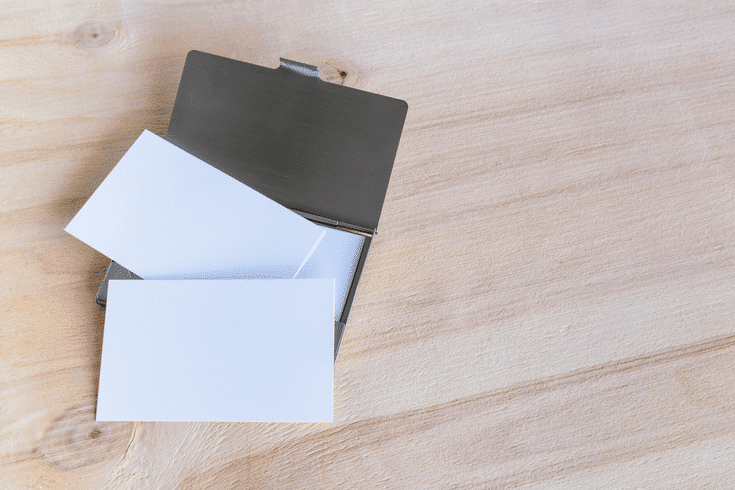Legal Protection of Derivative Works under Japanese Copyright Law: An Explanation of Editing, Databases, and Secondary Works

In the modern business environment, information and existing content are fundamental assets for companies. The creation of new value often involves leveraging, reorganizing, or transforming these existing assets. However, this process is governed by a complex legal framework. In particular, the Japanese Copyright Law provides detailed provisions for the protection of works derived from existing materials. Understanding this legal framework is not merely an academic pursuit but a critical element of risk management and intellectual property strategy for any business operating in Japan. This article focuses on three main categories under Japanese Copyright Law that protect works created based on existing works and information. First, ‘editorial works’ where value is created through the selection and arrangement of materials. Second, ‘database works,’ which are the digital era’s counterpart, focusing on the systematic construction of information. And third, ‘derivative works,’ which are created by adapting or transforming existing creative works. Each of these categories has different requirements and scopes of protection. For instance, how a mere collection of data can become a legally protected asset through ingenuity, or when a new work based on an existing one is recognized as an independent copyright without infringing on the original work’s rights. The answers to these questions have a direct impact on a company’s content strategy, data utilization, and the conclusion of licensing agreements. A deep understanding of these categories, their individual requirements for protection, and the related complex rights relationships is essential to protect one’s creative works and avoid infringing on others’ rights.
The Basic Concept of ‘Works’ Under Japanese Copyright Law
Before delving into the discussion of derivative works, it is essential to understand the basic definition of ‘works’ that are protected under Japanese Copyright Law. This definition serves as the starting point for all copyright protection and is the fundamental prerequisite for the protection of the various categories of works that will be discussed later.
Article 2, Paragraph 1, Item 1 of the Japanese Copyright Law defines a ‘work’ as “something that creatively expresses ideas or feelings and belongs to the fields of literature, science, art, or music.” This definition can be broken down into four key elements.
Firstly, it includes “ideas or feelings,” which means that mere facts or data are excluded from being considered works. Secondly, the expression must be “creative.” Here, ‘creativity’ simply requires some reflection of the author’s personality, and does not necessarily demand novelty or artistic sophistication. Thirdly, it must be “expressed.” This reflects the basic principle of copyright law known as the “idea-expression dichotomy,” where the specific expression is protected, while the underlying idea or concept itself is not. Fourthly, it must belong to the “fields of literature, science, art, or music.” This scope is broadly interpreted, and Article 10 of the Japanese Copyright Law lists examples of works such as novels, music, paintings, and architectural structures.
This definition of ‘works’ is not merely formalistic. The creativity of the arrangement in edited works and the creativity of adaptations in derivative works are ultimately judged against this standard of “something that creatively expresses ideas or feelings.” For example, a list simply arranged in alphabetical order is not protected as an edited work because it lacks a “creative” arrangement that reflects the author’s personality. Understanding this basic concept is the first step in accurately grasping the legal nature of derivative works.
Protecting a Collection of Materials as Intellectual Property: Edited Works Under Japanese Law
Many companies collect and organize vast amounts of information through their business activities. Even if this information itself is not considered a work of authorship, by organizing the collection for a specific purpose, it is possible to create legally protected intellectual property. This is the concept of “edited works” in Japan.
Article 12, Paragraph 1 of the Japanese Copyright Law stipulates that edited works (excluding those corresponding to databases) that possess originality due to the selection or arrangement of materials are protected as works of authorship. The key point here is that the protection targets not the individual “materials” but the originality in the “selection or arrangement” of those materials. Therefore, the materials that make up the edited work do not need to be works of authorship themselves; they can be mere facts, data, or even works in the public domain whose copyright protection period has expired.
In legal precedents, how this “originality in the selection or arrangement of materials” is judged is extremely important. A leading case in this regard is the “NTT Town Page Incident.” In this case, the court recognized the “Town Page,” a telephone directory classified by profession, as an edited work. The court found originality not in the individual data such as phone numbers or names but in the unique hierarchical classification system designed for the convenience of user searches. This classification system was not a mere mechanical arrangement but was considered to have originality due to the “unique ingenuity” applied based on editorial policy. In contrast, the “Hello Page” telephone directory, which simply listed names in alphabetical order, was deemed not to be an edited work due to the lack of originality in its arrangement.
This case provides important strategic implications for companies. Even when collecting publicly available data, such as market statistics or customer information, which is not protected in itself, if a company organizes and arranges it using a unique perspective or classification axis to build a useful information collection, that collection itself can be protected as a new intellectual property called an “edited work.” This means that by not just possessing data but also investing intellectually in its structuring, a company can create a unique asset with competitive advantage.
Information Aggregation in the Digital Era: The Database as a Copyrighted Work Under Japanese Law
The concept of a “database as a copyrighted work” adapts the notion of editorial works to the digital age. As the search and use of information through computers have become commonplace, Japanese copyright law has established special provisions to protect databases.
Article 12-2, Paragraph 1 of the Japanese Copyright Law states that “a database that exhibits creativity through the selection or systematic arrangement of information is protected as a copyrighted work.” Furthermore, Article 2, Paragraph 1, Item 10-3 defines a “database” as “a collection of writings, numbers, figures, or other information systematically arranged in such a way that the information can be searched using electronic computers.” Like editorial works, the protection targets not the individual pieces of information but the structure of the information as a collective. However, for databases as copyrighted works, the creativity in the “systematic arrangement” that presupposes computer searches is particularly scrutinized.
In this regard, a landmark case in Japanese judicial history is the “Tsubasa System Database Incident.” This case presented noteworthy judgments on two fronts. First, it involved the denial of copyright protection. In its 2002 decision, the Tokyo District Court ruled that the plaintiff’s database, which contained information on automobile parts and specifications, lacked the creativity required by copyright law due to its selection and systematic arrangement being commonplace and driven by industry necessity, thus denying the database’s status as a copyrighted work.
However, the court’s decision did not end there. Second, it established protection based on tort under Japanese civil law. While the court did not recognize copyright infringement, it determined that the defendant’s act of wholesale replication (dead copying) of the plaintiff’s database constituted a tort under Article 709 of the Japanese Civil Code. The court pointed out that the plaintiff had invested over 500 million yen in constructing and maintaining the database, and even if it was not a copyrighted work, it still represented a “business interest worthy of legal protection.” The court concluded that the defendant, being in a competitive relationship, replicated the database and used it for business purposes in a manner that harmed fair competition principles, constituting “grossly unfair means” and infringing upon the plaintiff’s interests.
This judgment is groundbreaking in that it provides a sort of safety net through tort law for commercially valuable databases that are not protected due to a lack of recognized creativity under copyright law. It demonstrates the practical stance of the Japanese judiciary in curbing parasitic competitive behavior and maintaining fair market order beyond the confines of specific intellectual property laws. For companies that invest heavily in building data assets, this precedent is an essential basis for protection.
Creating New Value from Existing Works: Derivative Works Under Japanese Copyright Law
New creative endeavors often draw inspiration from existing works. The adaptation of novels into films, the translation of foreign literature, and the arrangement of musical compositions are classic examples of creating new value based on existing copyrighted works. Japanese copyright law protects such works as ‘derivative works’.
Article 2, Paragraph 1, Item 11 of the Japanese Copyright Law defines derivative works as ‘works created by translating, arranging, transforming, dramatizing, cinematizing, or otherwise adapting works’. The original works are referred to as ‘original works’. In order to be protected as a derivative work, it is necessary to add new creative expression, not merely imitate or mechanically reproduce the original work.
From a legal perspective, the most important issue is the criteria for distinguishing between lawful derivative works and illegal copyright infringement (uncreative reproduction or adaptation). This criterion is deeply related to the fundamental principle that copyright protects expression, not ideas. The Supreme Court of Japan provided clear criteria in the 2001 ‘Esashi Oiwake Incident’ judgment.
In this case, the similarities between a non-fiction writer’s work on the folk song ‘Esashi Oiwake’ and its town, and a documentary program by the television broadcaster NHK that dealt with the same theme, were contested. The Supreme Court overturned the lower court’s decision and did not recognize copyright infringement. The established criterion was that an adaptation occurs when it ‘relies on an existing work and maintains the identity of its essential features of expression… such that those who come into contact with it can directly perceive the essential features of expression of the existing work’.
The Supreme Court analyzed the commonalities between the two works and determined that descriptions of historical facts and ideas or concepts such as ‘the annual folk music festival being the busiest time of the town’ are not ‘expressions’ protected under copyright law. Focusing on the specific language used to express these common ideas, the Court concluded that there was no commonality in the ‘essential features of expression’ between the writer’s work, which used poetic and literary expressions, and the television program, which used more direct and factual expressions.
This judgment by the Supreme Court set a high bar for the establishment of adaptation rights infringement, thereby guaranteeing the freedom to create new works based on ideas and facts presented in preceding works. This balances the protection of authors’ rights with the development of culture, which is also an objective of copyright law, and is a crucial decision that enhances the legal stability of business activities for companies involved in content production.
Complex Rights in Derivative Works: The Rights of the Original Author Under Japanese Copyright Law
When creating and using derivative works, it is crucial to pay attention to a very important legal aspect: the original author (the author of the original work) retains strong rights over the derivative works that are produced.
This principle is established by Article 28 of the Japanese Copyright Law, which states, “The author of the original work has exclusive rights of the same kind as those held by the author of the derivative work with respect to the use of the derivative work…” The practical consequence of this provision is that, in principle, the consent of both parties is required to use a derivative work. That is, the consent of both the author of the derivative work and the original author. For example, to screen a movie (derivative work) based on a novel (original work), you must obtain permission not only from the movie producer but also from the novelist, the original author.
So, what is the extent of the rights of the original author and the author of the derivative work? The decisive interpretation of this complex scope of rights was provided by the Supreme Court’s 1997 decision in the “Popeye Necktie Case.” This case involved a series of “Popeye” comics that had been created over many years, and the relationship between the later comics and the original comics was at issue.
The Supreme Court, recognizing the later comics as derivative works of the original comics, ruled on the scope of rights as follows: “It is appropriate to understand that copyright in a derivative work arises only with respect to the creative part newly added in the derivative work, and not with respect to the part that is common to and substantially the same as the original work.”
This judgment clarified that the rights of the original author and the author of the derivative work exist not in a merged form but in a layered manner. The author of the derivative work holds rights only to the creative part they have newly added (for example, unique word choices in translation or distinctive visual expressions in film adaptation). On the other hand, rights related to the core elements of the original work, such as the basic plot, personalitys, and world view, continue to belong entirely to the original author, even when embodied in the derivative work. This principle has a significant impact on the practice of licensing agreements. When a company obtains a license to use a derivative work, it is essential to clearly distinguish between the rights granted by the author of the derivative work (only the new creative part) and the rights that must be separately licensed from the original author (core elements) and to reflect this in the contract to avoid disputes later on.
Comparative Analysis: Differences Between Edited Works, Database Works, and Derivative Works Under Japanese Copyright Law
In our previous explanations, we have detailed the legal nature and requirements of edited works, database works, and derivative works. To clarify the main differences between these important categories of works, the following table organizes their personalityistics.
| Edited Works | Database Works | Derivative Works | |
|---|---|---|---|
| Legal Basis | Article 12 of the Japanese Copyright Law | Article 12-2 of the Japanese Copyright Law | Article 2, Paragraph 1, Item 11 and Article 11 of the Japanese Copyright Law |
| Subject of Protection | Creativity in the selection or arrangement of materials | Creativity in the selection or systematic structure of information | Dependence on the original work and the addition of new creative expression |
| Protection Requirements | Creativity recognized in the selection or arrangement of materials based on editorial policy | Creativity recognized in the selection or systematic structure of information intended for computer searches | While retaining the essential personalityistics of the original work’s expression, new creativity is added |
| Relationship with Materials/Original Work | Does not affect the rights of the materials themselves. Materials do not need to be works. | Does not affect the rights of the structured information itself. Information does not need to be a work. | The original author retains rights over the derivative work (Article 28 of the Japanese Copyright Law) |
Conclusion
The creation and utilization of derivative works are vital sources of value creation in modern business, but they also come with complex legal issues. Edited works, database works, and secondary works each have different protection requirements and rights under Japanese copyright law. For edited works and database works, the presence of “creativity” is questioned, and even if a database is not protected under copyright law, it may still be protected as a tort under Japanese civil law. In the case of secondary works, the strong rights of the original author are maintained, so obtaining permission to use them requires extra caution. Understanding these legal frameworks accurately and incorporating them into business strategies is key to preventing disputes over intellectual property and ensuring the protection of corporate assets.
Monolith Law Office has a wealth of experience in dealing with the complex copyright issues related to derivative works discussed in this article, serving a diverse range of clients both domestically and internationally. We understand that intellectual property is a core management asset and always provide legal advice rooted in the realities of business and strategy. Our firm includes attorneys who are native English speakers and those with foreign legal qualifications, enabling us to support our international clients with a unique structure. From copyright analysis and contract drafting to litigation and rights enforcement, we can provide comprehensive support to ensure that our clients’ intellectual property is securely protected in the Japanese market.
Category: General Corporate





















